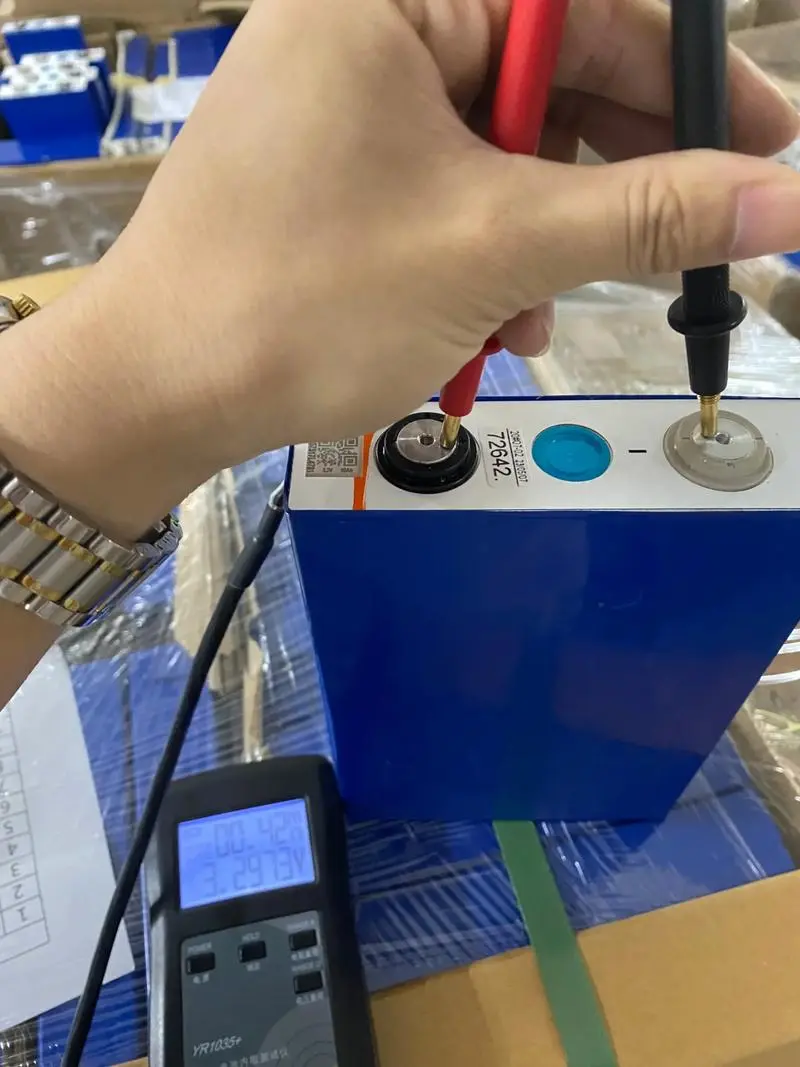LiFePO4 Battery Matching Overview
LiFePO4 battery matching involves combining multiple cells into a single battery pack. Below are the general requirements for the effective matching of LiFePO4 cells.
LiFePO4 Cell Selection
- Performance Matching: Select cells with similar performance characteristics, such as voltage, capacity, and internal resistance, to enhance pack balance and consistency.
- Batch Consistency: Use cells from the same production batch or with similar manufacturing parameters to minimize performance differences.
- Design Requirements: Ensure cells meet design specifications, including nominal voltage, capacity, and maximum charge/discharge current. Common specifications include a nominal voltage of 3.2V and a typical capacity of 100Ah.
Capacity Matching
- Consistent Capacity: Ensure the cells have similar capacities to meet the energy storage and release requirements of the pack.
- Charge/Discharge Testing: Perform tests to determine the actual capacity of each cell for matching purposes.
- Tolerance Range: Maintain a capacity tolerance of ±5%. For a 100Ah cell, the acceptable range is 95-105Ah.
- Example:
- Cell 1: 98.5Ah
- Cell 2: 99.2Ah
- Cell 3: 98.9Ah
- Cell 4: 100.3Ah
Voltage Matching
- Voltage Consistency: Ensure cells have similar voltage characteristics to maintain balanced pack voltages and prevent overloading.
- Tolerance Range: Aim for a voltage tolerance of ±0.05V.
- BMS Monitoring: Use a Battery Management System (BMS) to monitor and balance cell voltages.
- Example:
- Cell 1: 3.27V
- Cell 2: 3.28V
- Cell 3: 3.26V
- Cell 4: 3.29V
Internal Resistance Matching
- Resistance Consistency: Match cells with similar internal resistances to ensure balanced current distribution and prevent overheating.
- Testing Methods: Use AC impedance spectroscopy or constant current discharge tests to measure and match internal resistances.
- Tolerance Range: Maintain a resistance tolerance of ±5%.
- Example:
- Cell 1: 13.2 mΩ
- Cell 2: 13.2 mΩ
- Cell 3: 13.3 mΩ
- Cell 4: 13.4 mΩ
Temperature Control
- Temperature Range: Conduct the configuration process within a suitable temperature range, typically 15-30°C.
- Temperature Monitoring: Use sensors to monitor and maintain appropriate ambient temperatures.
- BMS Role: The BMS monitors voltage, capacity, and temperature, performing balanced charge/discharge as needed.
Balanced Charge/Discharge
- Consistent State: Ensure cells undergo balanced charge/discharge to maintain a consistent state of charge.
- BMS Functionality: The BMS adjusts charge currents, monitors discharge voltages, and uses active balancing techniques to ensure consistency.
Conclusion
Proper matching of LiFePO4 cells is crucial for constructing high-performance, safe DIY battery packs. Adhering to the requirements for cell selection, capacity, voltage, resistance, temperature, and charge/discharge ensures optimal operation. By investing time in careful matching, even novice builders can successfully create reliable battery packs tailored to their specific energy storage needs.
